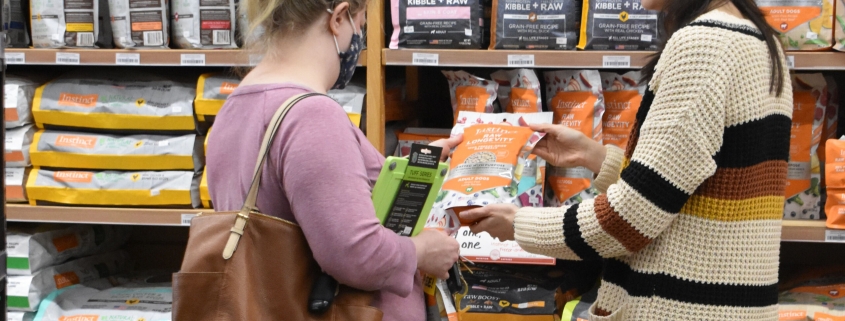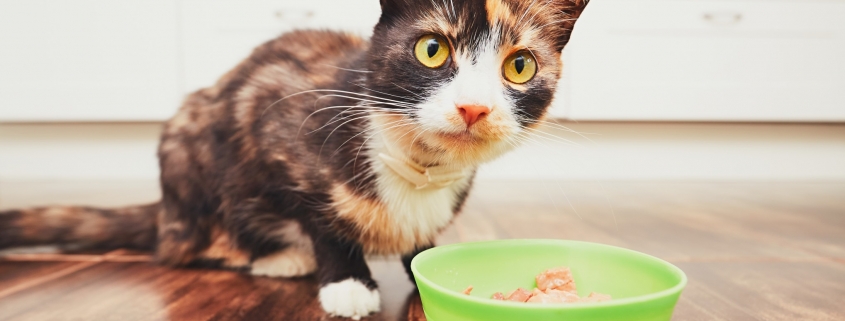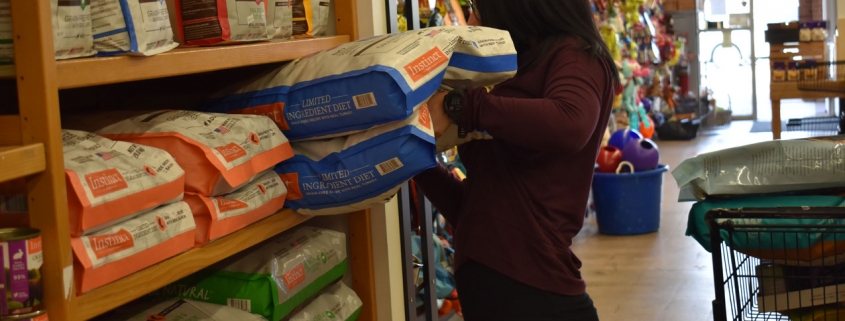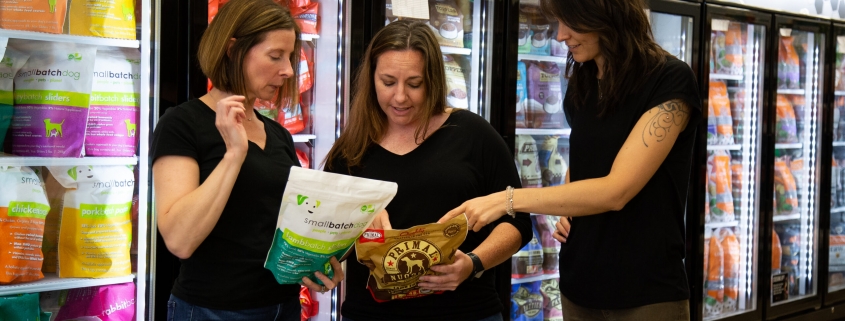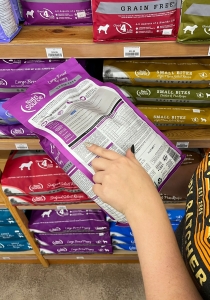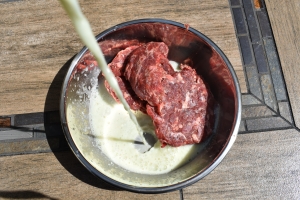Have you ever tried to switch your cat to a new food without success? This is actually a common problem with cats, so rest assured you’re not alone! Switching your cat’s food can be stressful for you and your cat. Before you start there are a few important things to consider. Switching your cat to a new food can be a challenge, but with careful planning, you can increase the chances of a successful transition. In this guide, we will provide you with practical tips to introduce a new food to your cat without stress.
Tips for a Smooth Cat Food Transition
- Relax. Believe it or not, getting stressed before you even switch the food can also stress out your cat. Be sure to set the right tone by not drawing extra attention to mealtime or making a big deal about the new food.
- Be sure to have 3+ weeks of your cats’ regular food on hand, this will be enough to fully transition.
- Begin with clean bowls or feeding platters. You should be in the habit of washing bowls daily to prevent unhealthy bacteria from building up.
- Believe it or not, bowls should be made of glass, USA food-grade ceramic, or a safe plant-based material. For more on this click here: Is Your Pet’s Healthy Food Being Served In A Toxic Bowl?
- Cats can actually develop an aversion to food based on the size of their feeding bowl. Bowls for food and water should be wide and shallow so cats’ whiskers do not hit the sides of the bowl. This is a phenomenon called whisker fatigue and it leads people to believe their cat is picky when in reality it may be that the bowl is irritating them. In fact, saucers or plates are actually best!
- Decide what you’re going to switch to, as there are countless options. Consider protein, texture, sourcing, and any health conditions at play. Textures of canned/wet food include pate, shredded, or stews. For raw food, some can be chunky or finer in texture.
Week-by-Week Transition Plan:
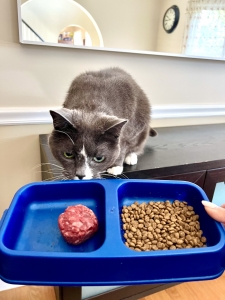
Week 1:
You will only use a pea-sized amount of the new food at each meal. If you are using cans or pouches you can try and store them in the fridge for 2-3 days. However, most cats do not like cold food. Be prepared to throw away a fair amount of cat food in your first 1-2 weeks. If you are using raw food, it becomes a little easier as you can thaw small amounts at a time since many raw cat foods come in convenient little kibble-sized pieces that thaw quickly. Regardless, be sure that when you offer the food to your cat that it is at room temperature.
Simply take a pea-sized amount and spread it thinly and evenly along the entire bottom of the dish you are using. Then, take your normal food (kibble or wet) and put it directly on top.
Notes for Success
At this point, it is important to not mix the food. The small amount in the bottom of the dish is to simply introduce the aroma of the new food, and not necessarily get them to consume it. Serve the meal as you normally would without making a big deal about it. Be sure that you do not hover or stare at your cat – simply go about your activities as you normally would. Cats tend to pick up on energy and stress, and you want to avoid introducing any new variables.
It is normal for your cat to not eat any of the new food or maybe leave and return to the dish a few times before eating their regular food. Again, try not to make a big deal about any new behaviors. They should be used to the smell of the new food within a few days. You may find them even starting to lick the bottom of the bowl and clean the dish by the end of the first 5-7 days. This is a good sign, however, be sure not to increase the new food too quickly as to avoid digestive upset.
Pro Tip:
By day 3-4 of week 1 you may choose to take one teaspoon of warm water into the dish prior to adding your regular food if your cat is showing interest in the new food. This can promote an appetizing smell and help to increase moisture intake. At the same time recognize that this is the most critical week, be sure not to rush! Patience is key!
Week 2:
By this point, your cat should have shown some interest and consumed some of the new food at the bottom of the bowl. At this point, you may increase the wet food to 1-2 teaspoons. Repeat a similar process at week one making sure the food is room temperature, with the new food on top. If your cat has seemed to like the added water, you may continue to add it.
By day 4-5 of week two, you may increase the food another small amount as long as they are consuming what you are already given. Now is the time to consider cutting back on the dry food by a similar volume.
Weeks #3 & #4:
By this time your cat may be only interested in the new food, which is perfectly ok! If this is the case, there may or may not be a little bit of loose stool as a result of the cat’s decision to switch to the new food abruptly. This should subside within a day or two as their system adjusts.
If they are still consuming both foods, then you can continue increasing the new food and decreasing the kibble as each day progresses. As mentioned above, the entire process can be slow and take 3-4 weeks or more!
Sometimes, they will begin to act hungry, and/or vomit bile when switched too quickly because the gastric pH and amount of secretion have not had time to adjust to the new food, especially in the case of switching from dry to wet food or raw food. If this does happen try offering a small “snack” outside of mealtime. This could include freeze dried treats, food or fresh meat.
Pro Tip: Cats tend to not seek out water as dogs do. While there are biological reasons for this, this doesn’t mean that they should not have ample fresh, clean water available – ideally away from their food bowl. If your cat does drink regularly and you feed dry food, do not be surprised to see their water intake decrease as you move to a more moisture-rich food. This is normal!
Summary:
The most important aspect of switching your cat’s food is not to stress! Be patient, and consistent. These practices pay off in time. Be sure to always ensure your cat has access to water. As they transition to a more moisture-rich food you may notice a healthier coat, brighter eyes, and even more energy! Your cat who may not have been too playful prior may have more vigor and energy for exercise – it may be worth investing in a toy or two!
About the Author: Nicole Cammack
Nicole is the founder & owner of multiple-award-winning NorthPoint Pets & Company, in Connecticut, USA. She has completed undergraduate work in biological sciences, business and holds an M.S. in Nutrition. Currently, Nicole is pursuing a PhD in Comparative Biomedical Sciences (Canine Nutrition/Metabolomics) at the prestigious University of Georgia in the USA.
Her background includes experience in the pharmaceutical industry on multiple R&D projects and has had the privilege to learn from leading figures in the human and pet health industries. Nicole has been heavily involved in police canine nutrition within the USA, helping to improve the modern care and feeding of working dogs. Her interests include working dog nutrition, raw feeding, pathogens, metabolomics, and nutrition’s relationship to disease in humans and canines. Her current research involves the exploration of the canine urinary metabolome and the relationship to diet.
Publications: Cammack, N.R., Yamka, R.M., and Adams, V.J. (2021). Low Number of Owner-Reported Suspected Transmission of Foodborne Pathogens From Raw Meat-Based Diets Fed to Dogs and/or Cats. Frontiers in Veterinary Science 8. doi: 10.3389/fvets.2021.741575.
https://www.frontiersin.org/articles/10.3389/fvets.2021.741575/full
Contact:
www.northpointpets.com
https://www.linkedin.com/in/nicole-cammack-8400084b/?trk=author_mini-profile_title



